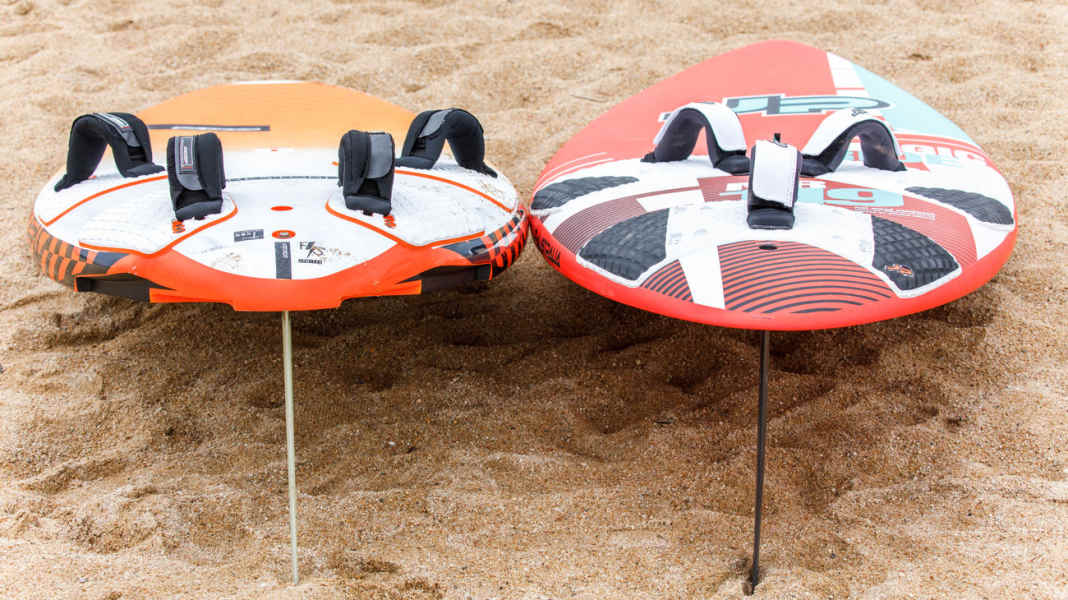
If you want to surf in stronger winds or even learn to glide, sooner or later you won't be able to avoid foot straps. Thanks to the straps, you have direct contact with the board - similar to a ski binding - and can control the board even at high speeds. If you are new to the topic of "foot straps", you will stumble across many questions: Where should the straps be mounted? How big should I make the straps? Should I fit three or four straps? You will find the answers to the most important questions below:
Tip 1: Choose the right board type
To learn to surf in the straps, you need boards that offer a position that is as far inwards and forwards as possible. The further inwards (towards the centre line of the board) and forwards the footstraps can be mounted, the easier it will be for you to master the step into the straps. It is important to know this: Not all board types offer the option of mounting the straps in this described beginner position.
In the following picture gallery, we show you what's important. Take a look!
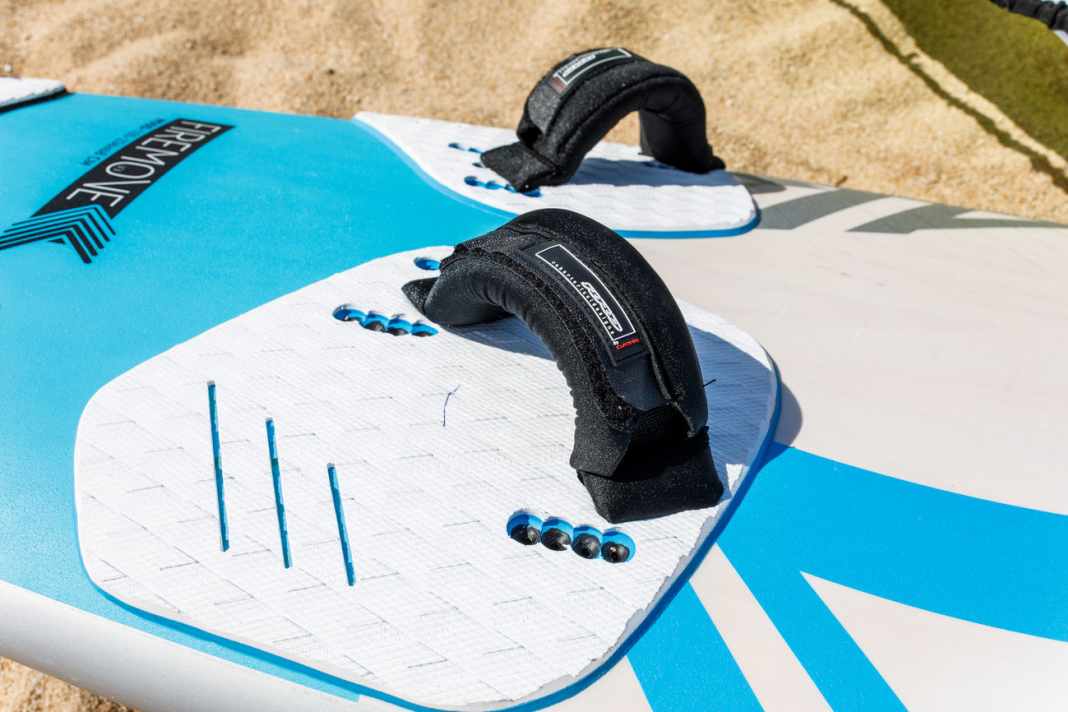




Freeride and freemove boards are particularly ideal, as their shape and riding behaviour also suit the needs of intermediates. Freestyle boards also offer far forward and inside positions, but the shapes are designed for very extreme manoeuvres and tricks that are less suited to the needs of intermediates - the same applies to wave boards!
surf tipBoards in the slalom and freerace categories only offer a very wide position on the edges, as they are designed for performance, top speed and experienced surfers. As a beginner, you'll be unnecessarily agonising and won't be able to exploit the speed potential of the boards at the beginning anyway. Better leave it alone! If your board offers the option of mounting it with three or four straps, as a surfer who is just learning to ride straps, you should first choose a three-strap setup. As you gain experience, you can then switch to a four-strap setup and mount the straps a little further out towards the edge of the board.
Tip 2: Set the right size
To ensure that you can easily get into the loops, the size must fit; this can be adjusted using Velcro straps. As a general rule, larger straps make it easier to get on, but offer less control at high speeds. Ideally, when learning loop surfing, the straps should be adjusted so that the toes are clearly visible on the inside. If you feel confident and are travelling at high speeds, you can also adjust the foot straps a little tighter and choose a strap position that is a little further out - this gives you more control over the board.
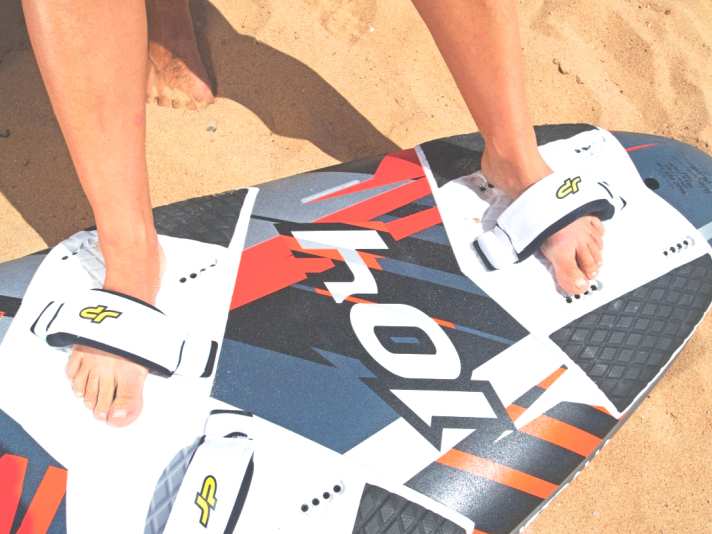
Tip 3: Adjust the lateral support of the foot straps
As standard, the plugs on most boards are between 14 and 15 centimetres apart. However, feet are very different - it's obvious that someone with a size 48 and thick winter shoes needs a wider strap than someone travelling barefoot in a size 38. So if you want to change the lateral hold of your loops, you can do this in two ways:
Use of non-matching plugs
Boards always offer more than just a plug for mounting. If you use screw holes that do not actually belong together, you can adjust the lateral width of the loop.
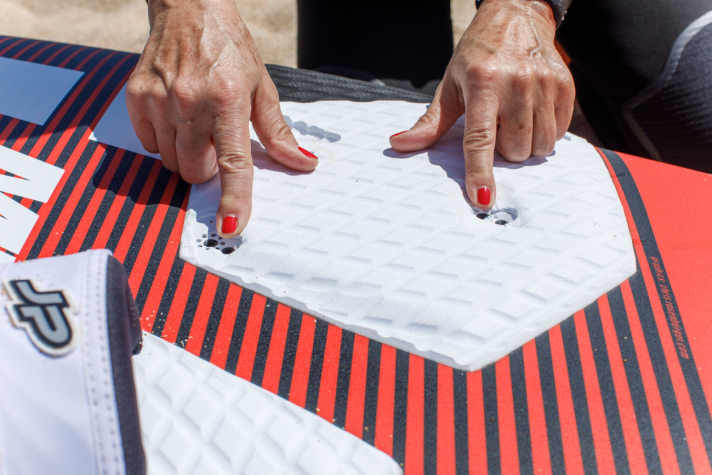
Turn the mounting plate of the foot straps round
Loops are usually attached with a screw on each side of the foot strap (except for wave or freestyle boards, which have double screws). The screw is inserted through a plastic part - this is usually not symmetrical. If you turn the wide side inwards, the loop becomes tighter. If you turn the wide side outwards and the narrow side inwards, the strap will also fit wider feet - try it out!
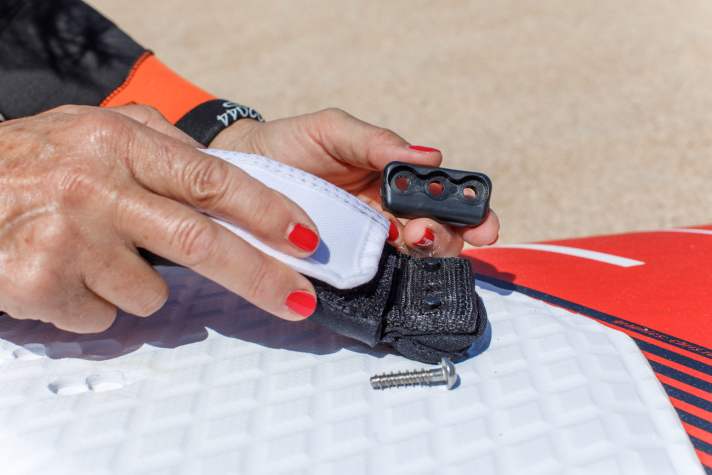
You can also find everything you need to know about foot straps in a video tutorial on our YouTube channel . Click here:
